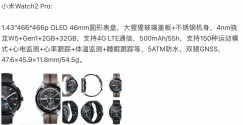The demand and application of high thermal conductivity silicon carbide ceramics in the semiconductor field
At present, silicon carbide ( SiC) is a thermally conductive ceramic material that is actively researched at home and abroad. The theoretical thermal conductivity of SiC is very high, with some crystal forms reaching 270W/mK, making it a leader among non-conductive materials. For example, the application of SiC thermal conductivity can be seen in substrate materials for semiconductor devices, high thermal conductivity ceramic materials, heaters and heating plates for semiconductor processing, capsule materials for nuclear fuel, and gas sealing rings for compressor pumps.
Grinding discs and fixtures are important process equipment for silicon wafer production in the semiconductor industry. If the grinding disc is made of cast iron or carbon steel, its service life will be short and its thermal expansion coefficient will be large. During the processing of silicon wafers, especially during high-speed grinding or polishing, the flatness and flatness of the silicon wafer will deteriorate due to the wear and thermal deformation of the grinding disc. Parallelism is difficult to guarantee. The grinding disc using silicon carbide ceramics has low wear due to its high hardness, and its thermal expansion coefficient is basically the same as that of the silicon wafer, so it can be grinded and polished at high speed.
In addition, when silicon wafers are produced, they need to undergo high-temperature heat treatment. Silicon carbide fixtures are often used for transportation. They are heat-resistant and non-destructive. Coatings such as diamond-like carbon (DLC) can be coated on the surface to enhance performance, alleviate wafer damage, and prevent Contamination spreads.
In addition, as a representative of the third generation of wide bandgap semiconductor materials, silicon carbide single crystal material has a large band gap (about 3 times that of Si), high thermal conductivity (about 3.3 times that of Si or 10 times that of GaAs), Properties such as high electron saturation mobility rate (about 2.5 times that of Si) and high breakdown electric field (about 10 times that of Si or 5 times that of GaAs). SiC devices make up for the shortcomings of traditional semiconductor material devices in practical applications and are gradually becoming the mainstream of power semiconductors.
With the continuous development of science and technology,
the demand for silicon carbide ceramics in the semiconductor field has increased rapidly, and high thermal conductivity is a key indicator for its application in semiconductor manufacturing equipment components . Therefore, it is crucial to strengthen the research on high thermal conductivity silicon carbide ceramics. Reducing the oxygen content of the lattice, improving the density, and reasonably regulating the distribution of the second phase in the lattice are the main methods to improve the thermal conductivity of silicon carbide ceramics.
At present, there is little research on high thermal conductivity silicon carbide ceramics in my country, and there is still a large gap compared with the world level. Future research directions include:
● Strengthen research on the preparation process of silicon carbide ceramic powder. The preparation of high-purity, low-oxygen silicon carbide powder is the basis for the preparation of high thermal conductivity silicon carbide ceramics;
● Strengthen the selection of sintering aids and related theoretical research;
● Strengthening the research and development of high-end sintering equipment, and obtaining a reasonable microstructure by regulating the sintering process is a necessary condition for obtaining high thermal conductivity silicon carbide ceramics.




